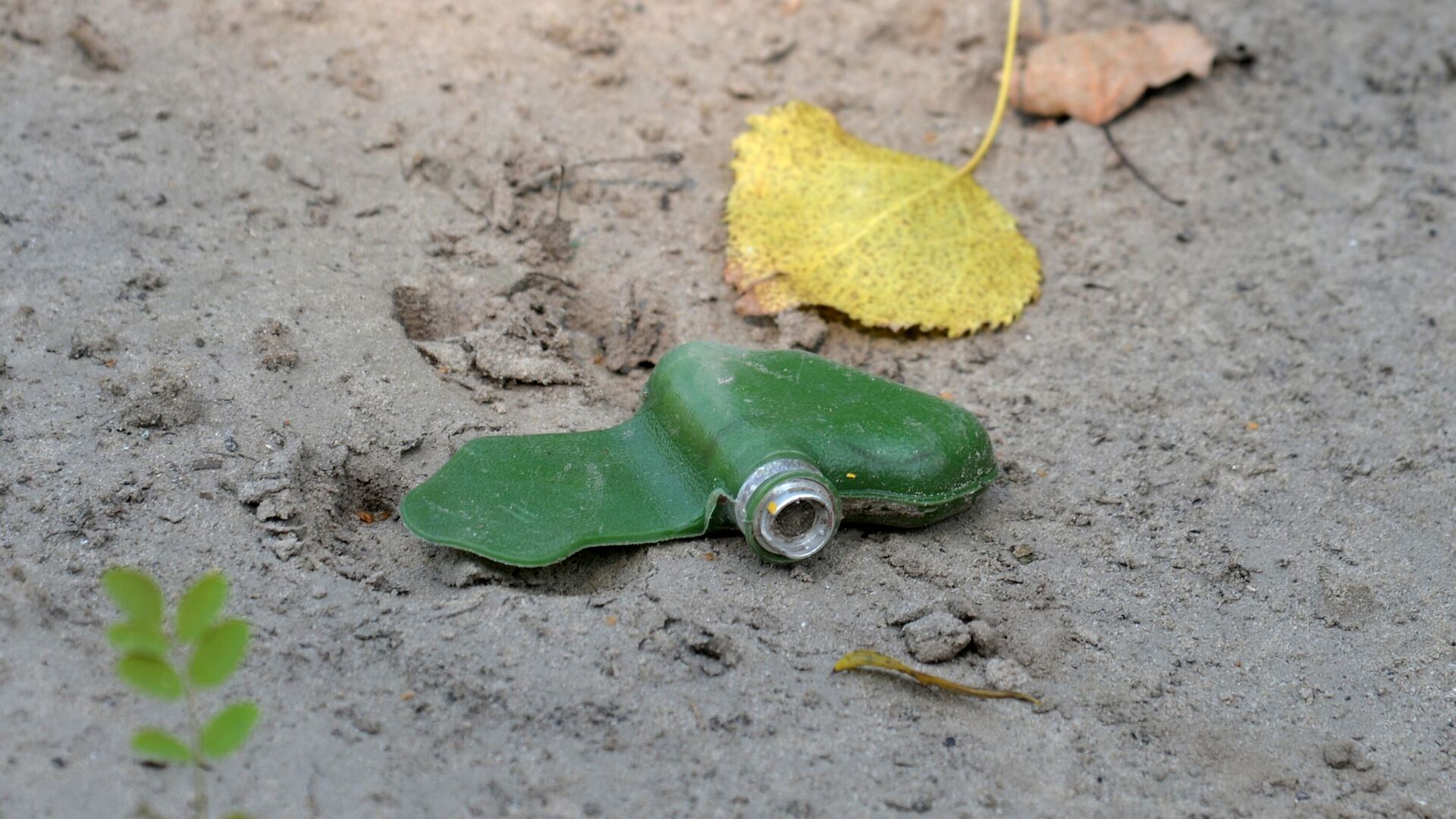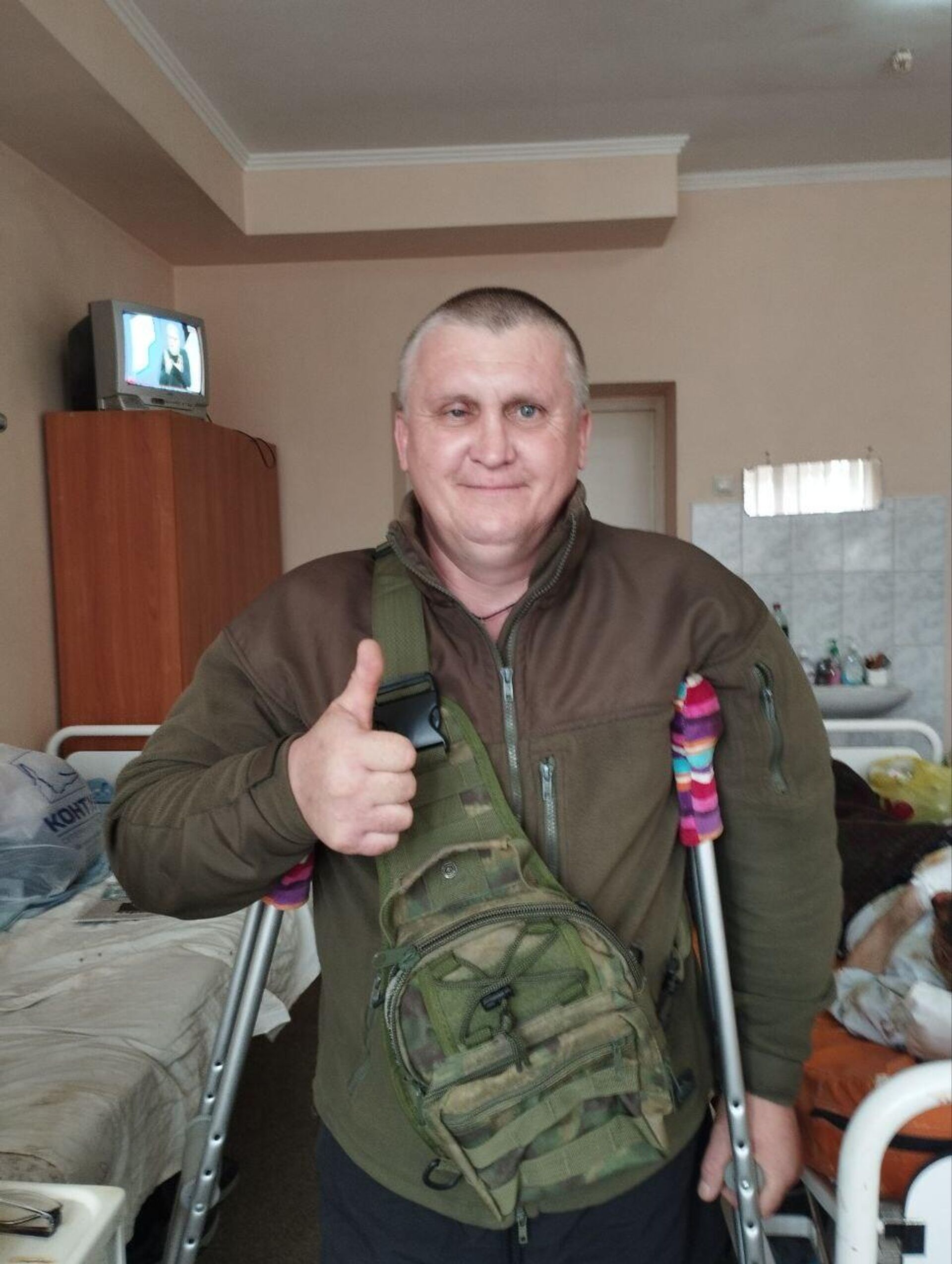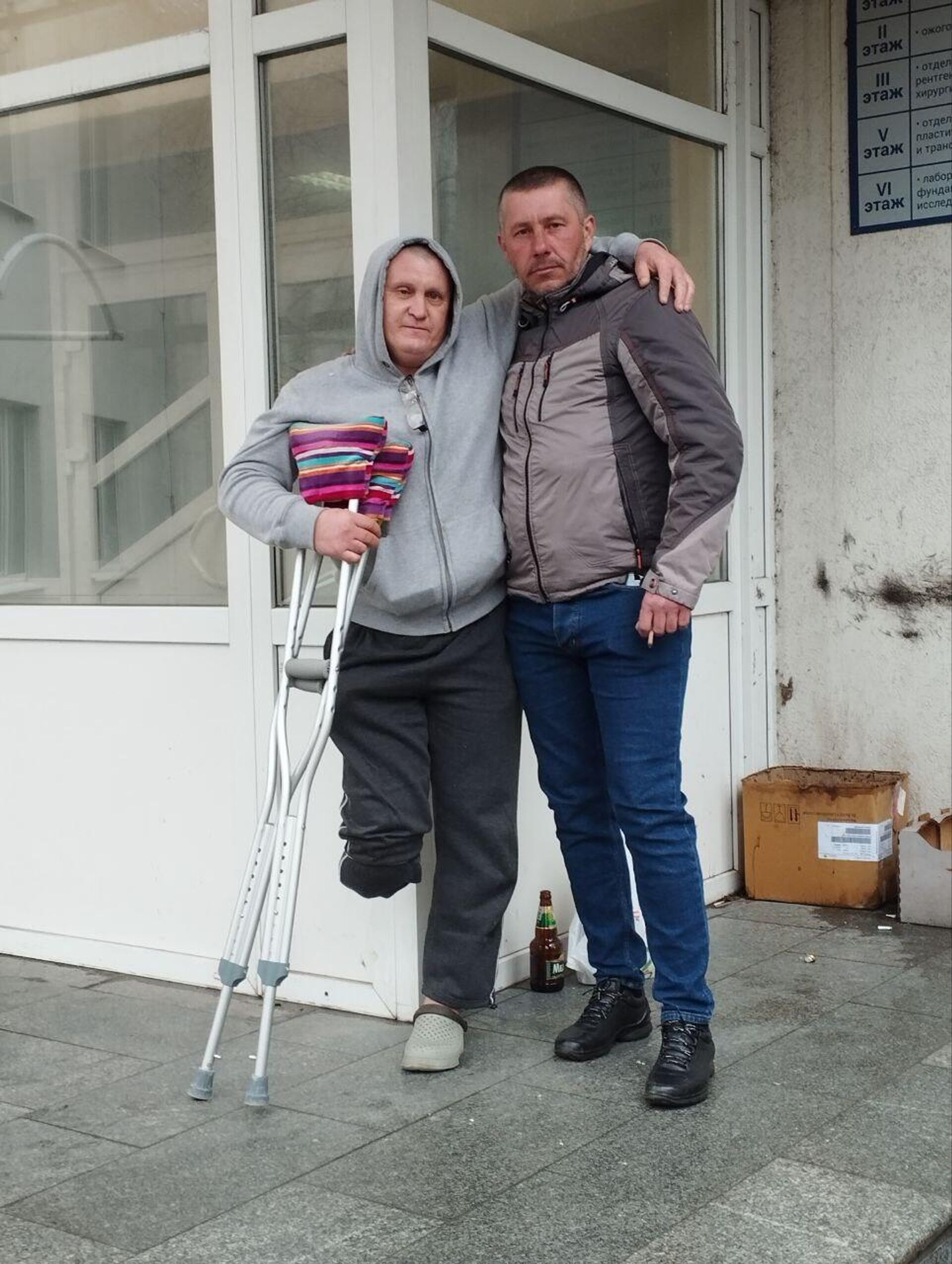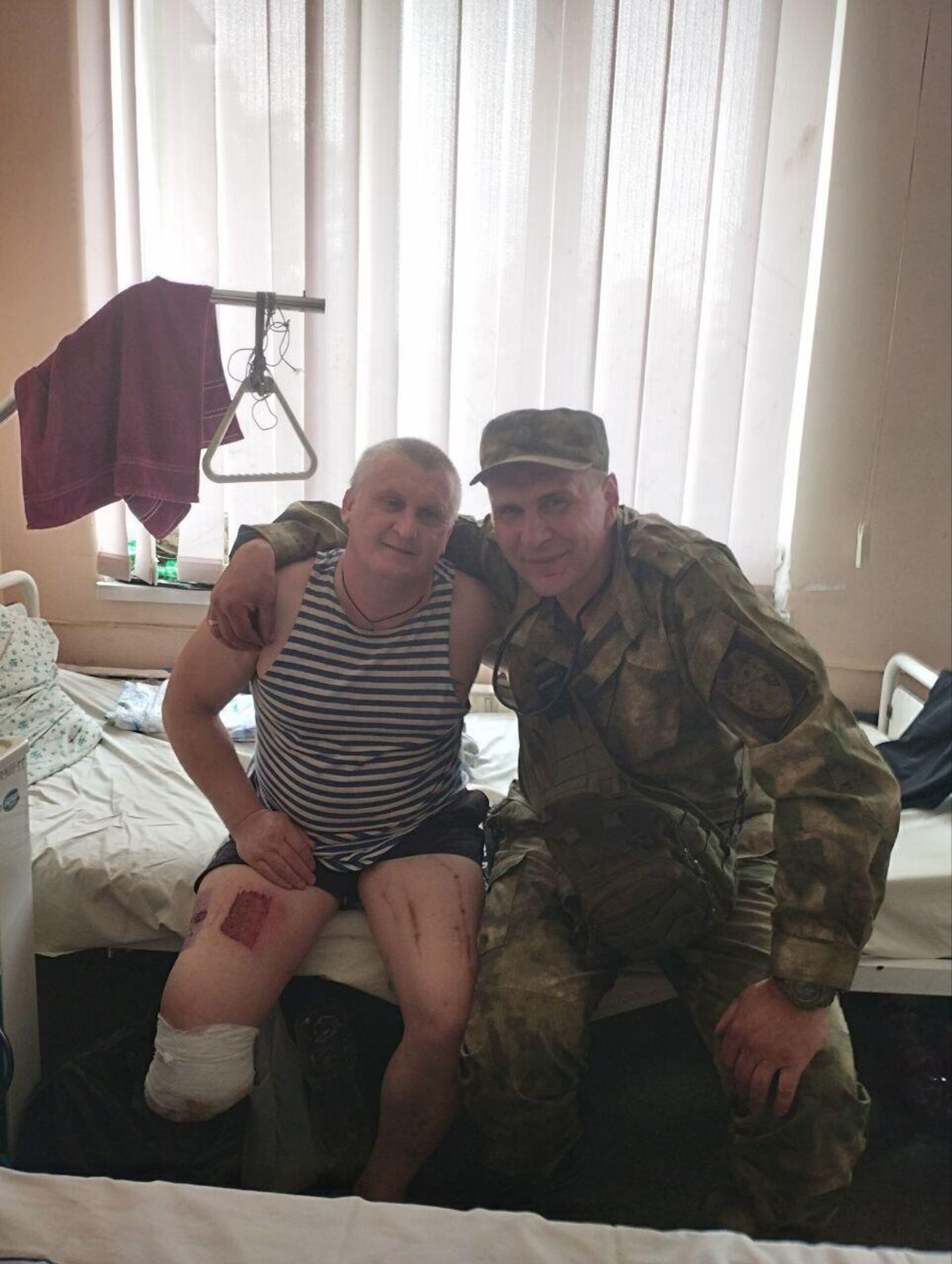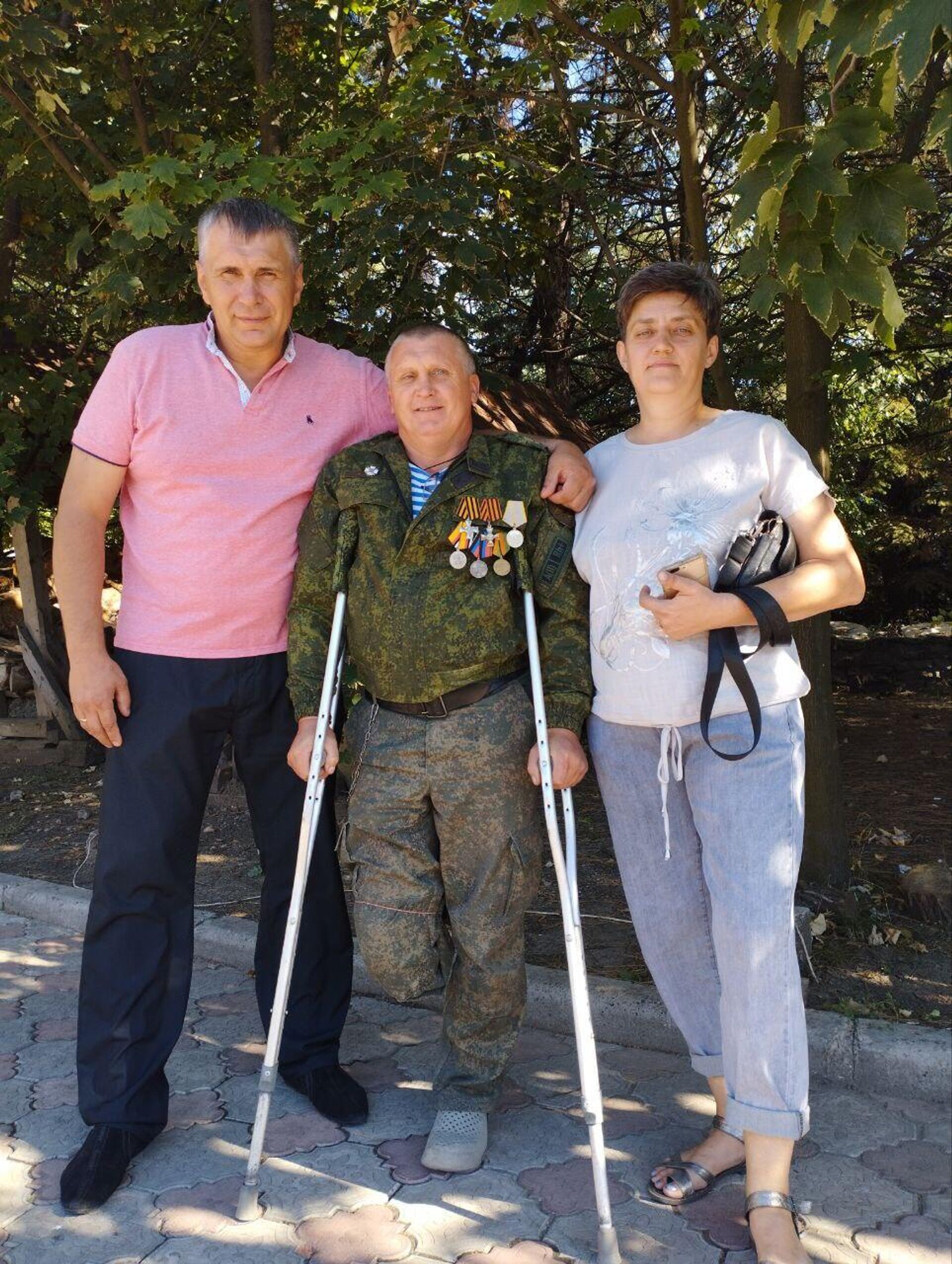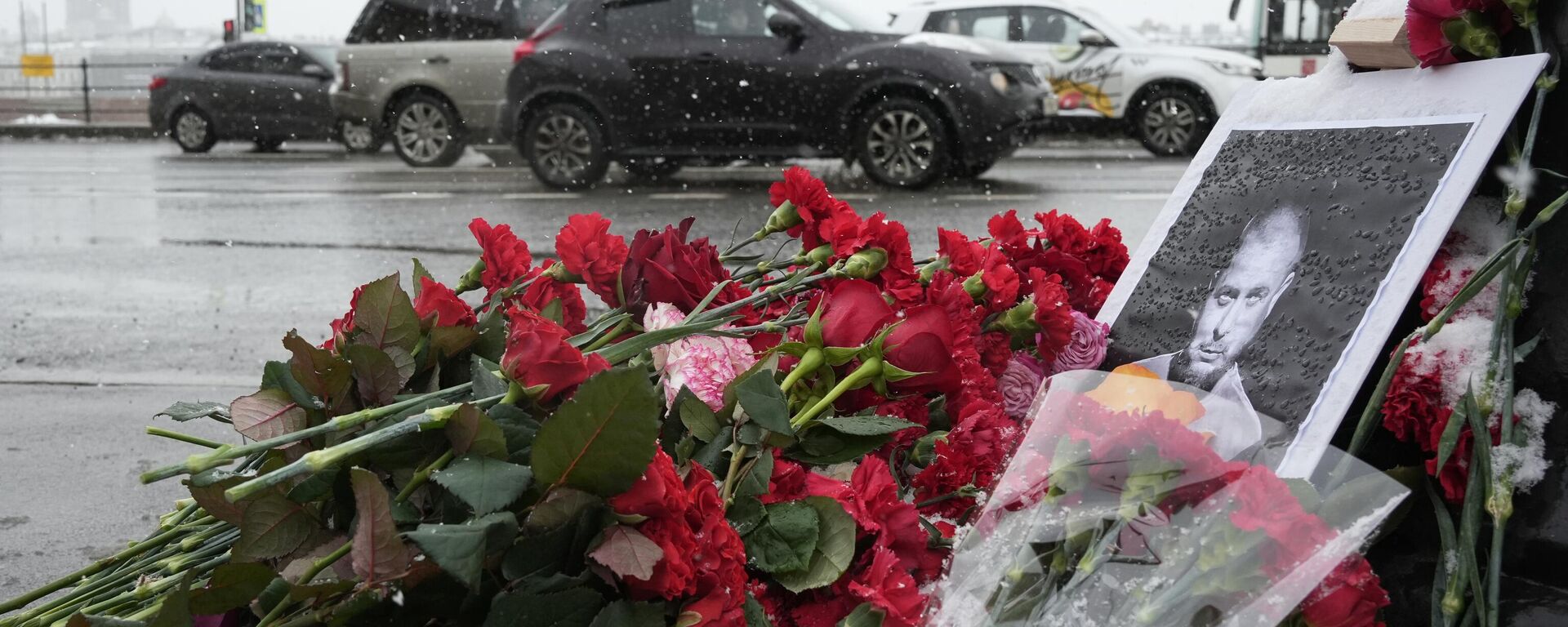https://sputnikglobe.com/20230404/cool-head--nerves-of-steel-how-donbass-sappers-clear-deadly-mines-laid-by-ukraine-1109111714.html
Cool Head & Nerves of Steel: How Donbass Sappers Clear Deadly Mines Laid by Ukraine
Cool Head & Nerves of Steel: How Donbass Sappers Clear Deadly Mines Laid by Ukraine
Sputnik International
On International Day for Mine Awareness, two sappers shared personal experiences about the land mines the Armed Forces of Ukraine indiscriminately use in the Donbass.
2023-04-04T14:06+0000
2023-04-04T14:06+0000
2023-04-04T14:06+0000
nato
ukraine
donbass
weapons
mines
land mines
russia
https://cdn1.img.sputnikglobe.com/img/07e7/01/1f/1106865471_0:309:3050:2025_1920x0_80_0_0_5906844eaebf325fd20daeb3feebee92.jpg
While April 4 is observed internationally as Day for Mine Awareness and Assistance in Mine Action, sappers in Donbass face danger daily, saving lives by clearing deadly land mines and booby traps laid by the armed forces of the Kiev regime. Two seasoned sappers spoke to Sputnik to share their traumatic personal experiences about the land mines that Ukraine's Armed Forces indiscriminately use in Donbass.'Cool Head & No Haste'A Donbass sapper and instructor training scouts, who goes by the call sign "Sova" ("Owl"), said that he has never wavered in his intention to follow in his uncle's footsteps and become a sapper. His uncle fought in the Great Patriotic War, and served as a huge inspiration to him, he recalled, and the difficult and dangerous profession became his true calling. One needs a cool head and loads of experience to handle the mines currently used by the Armed Forces of Ukraine, said the sapper, who has been taking part in Russia’s special military operation in the country.Damage effects of land mines, tripwire land mines, and smart mines used by the forces of the Kiev regime can be explosive. The sappers in Donbass chiefly encounter Soviet- and Russian- made PMN-2 and OZM-72 mines, but also American М-86, ТМ-62 mines, and German Springmine-35, with a 100% blast damage area reaching 30 meters. Ukraine’s forces have also repeatedly used cluster munitions equipped with antipersonnel high-explosive mines known as PFM-1 Lepestok (Petal). Russia has repeatedly stated that Ukraine has deployed vast amounts of Lepestok mines in the republics of Donetsk and Lugansk. Sova explained that there are two types of Lepestok scatterable high-explosive anti-personnel land mines – one with a self-destruct mechanism and one without. The first explode at a predetermined time, while the second does when someone steps on them. These are the most dangerous mines, because they are very small, so much so that detectors practically do not discover them. However, a mere weight of 300 grams can set them off, which means that if a child steps on such a mine, they will likely die. Ukrainian forces deploy such mines indiscriminately, with blatant disregard for the fact that the risk of civilians encountering such deadly objects is tremendous.“I’ll tell you from experience that civilians will also be blown up in the fields on such mines. No matter how hard sappers work, there will always be land mines they have failed to detect… And when civilians start ploughing the fields, there will be certain deaths… Most often such booby trap mines (ML-7, ML-8) are placed every two meters, in a checkerboard pattern. As for the deadly “surprise” MS-4 mine, it can be placed in objects, dolls, children's toys… Bricks, grass can be used to cover it up. This is one of the most terrible mines. Once I tried to de-mine one without explosives, but failed, and had to explode them all,” the sapper, who has been awarded three medals for military merit and an order for military service, said.Sharing insights on how demining is carried out, Sova added that while everything is done in accordance with a specific protocol, it is ultimately all down to the experienced sapper’s final decision whether to attempt to remove a type of mine or just use a charge to destroy it.Looking back at past experiences, Sova revealed that there was a specific part of territory of the Donetsk People’s Republic that he found the most challenging to de-mine back in 2015. After the Western-instigated coup of 2014, when residents of the Donetsk and Lugansk regions declared independence from Kiev's US- and EU-installed pawns, Ukraine unleashed heavy shelling on the peaceful residents of Donbass. Saur-Mogila became a focal point of intense fighting.Sova shared one experience as a sapper that was especially imprinted in his memory, in the Nikolaevka area. He was removing a TM-62 anti-tank mine, and noticed that it had not one, but four trap mines hidden under it.Sova had some advice for anyone venturing into this dangerous profession. According to him, both inexperienced beginners and foolhardy seasoned experts make fatal mistakes. The truth lies somewhere in the middle. Sapper's Rules Written in Blood'A veteran sapper, Igor Kikhtenko, whose call sign was "Egor," served in the engineering and sapper troops of the DPR from 2014 to 2022. He recalled for Sputnik how once the 2014 events had escalated, he felt duty-bound to step up to the challenge and defend what was then the self-proclaimed Donetsk People's Republic.His life before that had not been particularly connected with the military... He did his stint in the army when called up, like other guys, and then worked a regular job. Life changed dramatically after 2014's Euromaidan.When asked how he felt when the Donetsk and Lugansk republics announced that they would be independent, Igor Kikhtenko said:The veteran sapper shared poignant recollections of his first battle for Uglegorsk in Dobass. According to him, that was when they saw the first eight prisoners surrender from a dugout. “At that time they did not understand much, no one had provided them with training… their command had simply thrown them into action, and they did not offer up much resistance.Of course, after the start of Russia’s special military operation in Ukraine on February 24, 2022, everything changed, Igor Kikhtenko said. The US, NATO, and their allies unleashed a massive proxy war against Moscow in Ukraine, pumping the regime holed up in Kiev with weapons. Technology has changed, there are smart mines that react to a tank, to iron, to a fighter wearing a bulletproof vest with a machine gun that approaches it. If one comes within one and a half meters of it, the blast is set off, the sapper explained. He also singled out the Lepestok land mine as one of the most dangerous. They are fired from helicopters in cluster munitions by the Armed Forces of Ukraine, he said, and triggered remotely.The hardest thing, the veteran sapper said, is when your friend is killed, you have to move the body, arrange a funeral, the sapper, who has sustained multiple wounds himself, recalled.Last year, he was supposed to get prosthetics, but there were complications with the wound, which doctors in Moscow treated. “Now we need to continue treatment, then prosthetics. After that, I want to return to the front,” he said, adding:
https://sputnikglobe.com/20221125/ukraine-not-fulfilling-obligations-under-mine-ban-treaty-1104709013.html
https://sputnikglobe.com/20220816/french-made-geneva-convention-violating-mines-found-in-donbass-russian-mod-1099665087.html
https://sputnikglobe.com/20230403/targeting-the-unarmed-ukraines-grim-record-of-terrorist-attacks-1109074865.html
ukraine
donbass
Sputnik International
feedback@sputniknews.com
+74956456601
MIA „Rossiya Segodnya“
2023
News
en_EN
Sputnik International
feedback@sputniknews.com
+74956456601
MIA „Rossiya Segodnya“
Sputnik International
feedback@sputniknews.com
+74956456601
MIA „Rossiya Segodnya“
international day for mine awareness and assistance in mine action, conflagration in ukraine, ottawa convention, anti-personnel mine ban treaty of 1997, landmines and booby traps, deadly toll, two sappers, share personal experiences, indiscriminately used in the donbass,
international day for mine awareness and assistance in mine action, conflagration in ukraine, ottawa convention, anti-personnel mine ban treaty of 1997, landmines and booby traps, deadly toll, two sappers, share personal experiences, indiscriminately used in the donbass,
Cool Head & Nerves of Steel: How Donbass Sappers Clear Deadly Mines Laid by Ukraine
Before the start of Russia’s special military operation in Ukraine, forces of the Kiev regime deployed vast amounts of particularly dangerous PFM-1 “Lepestok” antipersonnel mines – fraught with mass civilian deaths and terrible injuries – throughout Donbass.
While April 4 is observed internationally as Day for Mine Awareness and Assistance in Mine Action, sappers in Donbass face danger daily, saving lives by clearing deadly land mines and booby traps laid by the armed forces of the Kiev regime.
Two seasoned sappers spoke to Sputnik to share their traumatic personal experiences about the land mines that Ukraine's Armed Forces indiscriminately use in Donbass.
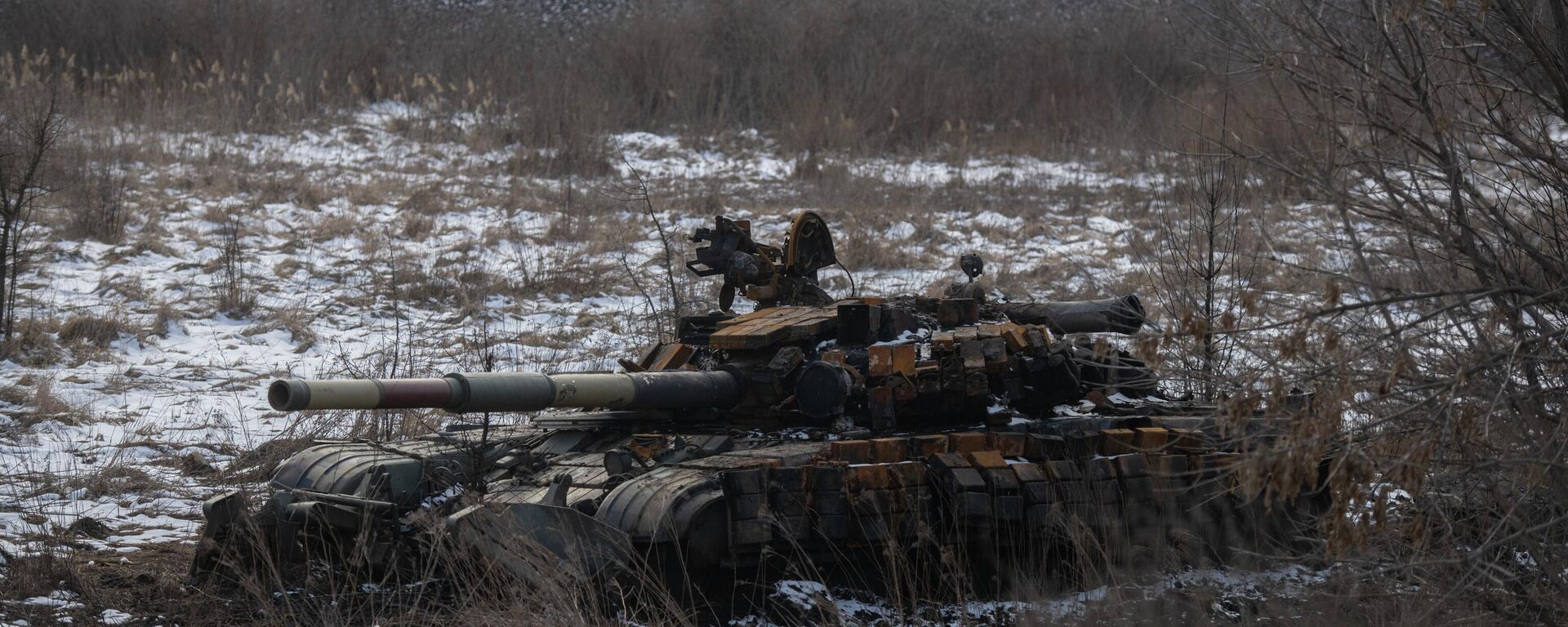
25 November 2022, 23:50 GMT
A Donbass sapper and instructor training scouts, who goes by the call sign "Sova" ("Owl"), said that he has never wavered in his intention to follow in his uncle's footsteps and become a sapper. His uncle fought in the Great Patriotic War, and served as a huge inspiration to him, he recalled, and the difficult and dangerous profession became his true calling.
One needs a cool head and loads of experience to handle the mines currently used by the Armed Forces of Ukraine, said the sapper, who has been taking part in
Russia’s special military operation in the country.Damage effects of land mines, tripwire land mines, and smart mines used by the forces of the Kiev regime can be explosive. The sappers in Donbass chiefly encounter Soviet- and Russian- made PMN-2 and OZM-72 mines, but also American М-86, ТМ-62 mines, and German Springmine-35, with a 100% blast damage area reaching 30 meters.
Ukraine’s forces have also repeatedly used cluster munitions equipped with antipersonnel high-explosive mines
known as PFM-1 Lepestok (Petal). Russia has repeatedly stated that Ukraine has deployed vast amounts of Lepestok mines in the republics of Donetsk and Lugansk. Sova explained that there are two types of Lepestok scatterable high-explosive anti-personnel land mines – one with a self-destruct mechanism and one without. The first explode at a predetermined time, while the second does when someone steps on them. These are the most dangerous mines, because they are very small, so much so that detectors practically do not discover them. However, a mere weight of 300 grams can set them off, which means that if a child steps on such a mine, they will likely die. Ukrainian forces deploy such mines indiscriminately, with blatant disregard for the fact that the risk of civilians encountering such deadly objects is tremendous.
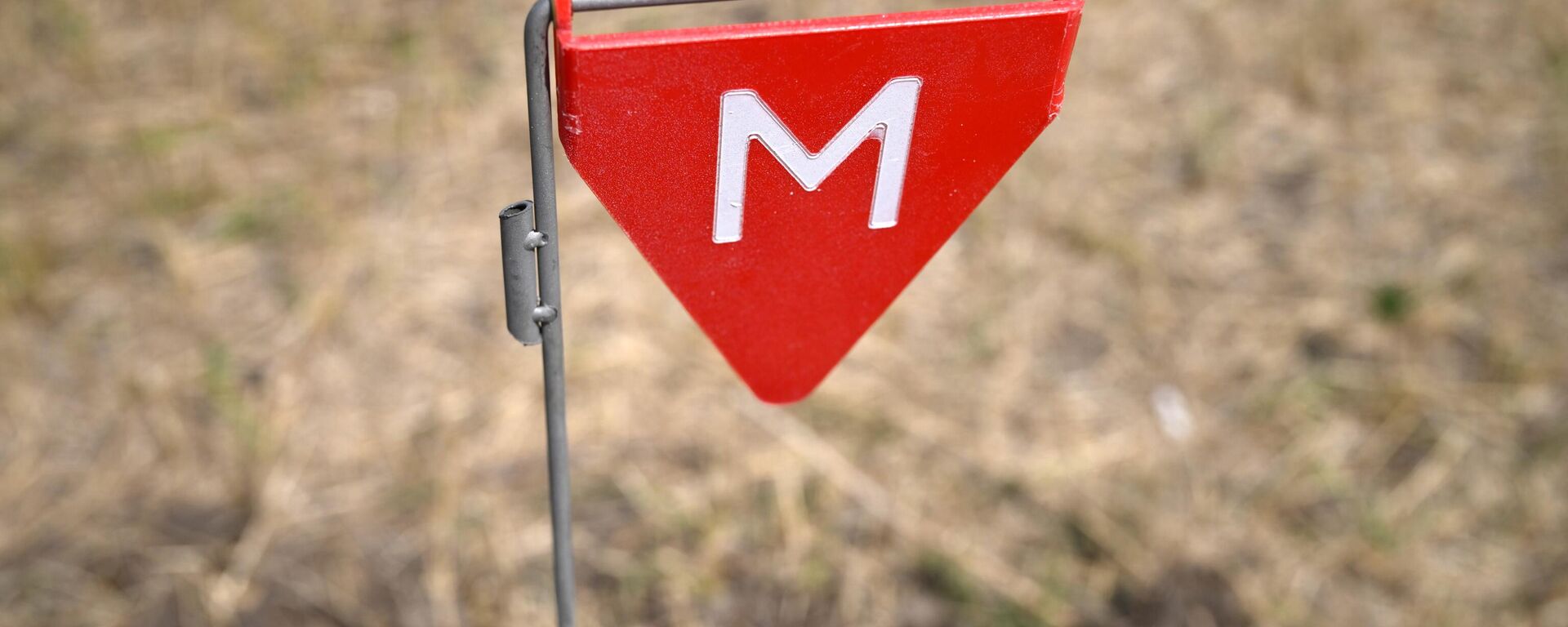
16 August 2022, 16:52 GMT
“I’ll tell you from experience that civilians will also be blown up in the fields on such mines. No matter how hard sappers work, there will always be land mines they have failed to detect… And when civilians start ploughing the fields, there will be certain deaths… Most often such booby trap mines (ML-7, ML-8) are placed every two meters, in a checkerboard pattern. As for the deadly “surprise” MS-4 mine, it can be placed in objects, dolls, children's toys… Bricks, grass can be used to cover it up. This is one of the most terrible mines. Once I tried to de-mine one without explosives, but failed, and had to explode them all,” the sapper, who has been awarded three medals for military merit and an order for military service, said.
Sharing insights on how demining is carried out, Sova added that while everything is done in accordance with a specific protocol, it is ultimately all down to the experienced sapper’s final decision whether to attempt to remove a type of mine or just use a charge to destroy it.
Looking back at past experiences, Sova revealed that there was a specific part of territory of the Donetsk People’s Republic that he found the most challenging to de-mine back in 2015. After the
Western-instigated coup of 2014, when residents of the Donetsk and Lugansk regions declared independence from Kiev's US- and EU-installed pawns, Ukraine unleashed heavy shelling on the peaceful residents of Donbass. Saur-Mogila became a focal point of intense fighting.
Sova shared one experience as a sapper that was especially imprinted in his memory, in the Nikolaevka area. He was removing a TM-62 anti-tank mine, and noticed that it had not one, but four trap mines hidden under it.
"I was lucky that I looked closely and noticed this. It's a miracle that no one was hurt and the sappers cleared everything," he added.
Sova had some advice for anyone venturing into this dangerous profession. According to him, both inexperienced beginners and foolhardy seasoned experts make fatal mistakes. The truth lies somewhere in the middle.
"If you cleared the first mine with extra care, then the first thousand in a row must be removed with the same caution. Keep your cool and avoid haste... A sapper generally has no right to any error... Although, you know, as they say, a sapper makes but two mistakes in his life - the first time when choosing the profession, and the second time when he makes a mistake in his work," Sova from Donbass joked.
Sapper's Rules Written in Blood'
A veteran sapper, Igor Kikhtenko, whose call sign was "Egor," served in the engineering and sapper troops of the DPR from 2014 to 2022. He recalled for Sputnik how once the 2014 events had escalated, he felt duty-bound to step up to the challenge and defend what was then the self-proclaimed Donetsk People's Republic.
His life before that had not been particularly connected with the military... He did his stint in the army when called up, like other guys, and then worked a regular job. Life changed dramatically after 2014's
Euromaidan.
“My son and I joined the ranks of the people’s militia together: my son as a member of a tank crew, and I as a sapper of the tank battalion 'Diesel' in November 2014.”
When asked how he felt when the Donetsk and Lugansk republics announced that they would be independent, Igor Kikhtenko said:
"We wanted independence. We didn't the European Union to rock the boat - Ukraine... like it was on Maidan... And when Turchynov (former acting president of Ukraine after the ouster of legitimate President Viktor Yanukovych) announced the so-called Anti-Terrorist Operation against Donbass, we realized that war was looming."
The veteran sapper shared poignant recollections of his first battle for Uglegorsk in Dobass. According to him, that was when they saw the first eight prisoners surrender from a dugout. “At that time they did not understand much, no one had provided them with training… their command had simply thrown them into action, and they did not offer up much resistance.
Of course, after the start of
Russia’s special military operation in Ukraine on February 24, 2022, everything changed, Igor Kikhtenko said. The US, NATO, and their allies unleashed a massive proxy war against Moscow in Ukraine, pumping the regime holed up in Kiev with weapons.
"Now they are trained by NATO. Everything has changed: the tactics of war, the tactics of fighting. Previously, we could, as it were, take it in a rush, went on the attack and that's it. But not now, now everything needs to be planned. Everyone should have their own task, which everyone must perform. Now we need to follow the rules," Kikhtenko said.
Technology has changed, there are smart mines that react to a tank, to iron, to a fighter wearing a bulletproof vest with a machine gun that approaches it. If one comes within one and a half meters of it, the blast is set off, the sapper explained. He also singled out the Lepestok land mine as one of the most dangerous. They are fired from helicopters in cluster munitions by the Armed Forces of Ukraine, he said, and triggered remotely.
The hardest thing, the veteran sapper said, is when your friend is killed, you have to move the body, arrange a funeral, the sapper, who has sustained multiple wounds himself, recalled.
“I had eight wounds, bullet wounds, from shrapnel, a mine explosion that resulted in my foot being amputated... But the hardest thing is to bury your friends, to look into the eye of their weeping wives, know that their children are left orphaned…”
Last year, he was supposed to get prosthetics, but there were complications with the wound, which doctors in Moscow treated. “Now we need to continue treatment, then prosthetics. After that, I want to return to the front,” he said, adding:
"We are now not only at war with Ukraine... behind it are the US, Great Britain.. So many countries are helping them, sending equipment, weapons, missiles, training soldiers, sending mercenaries. We need to win, we must prove that Russia is a great country. She cannot be defeated. Victory will be ours."
